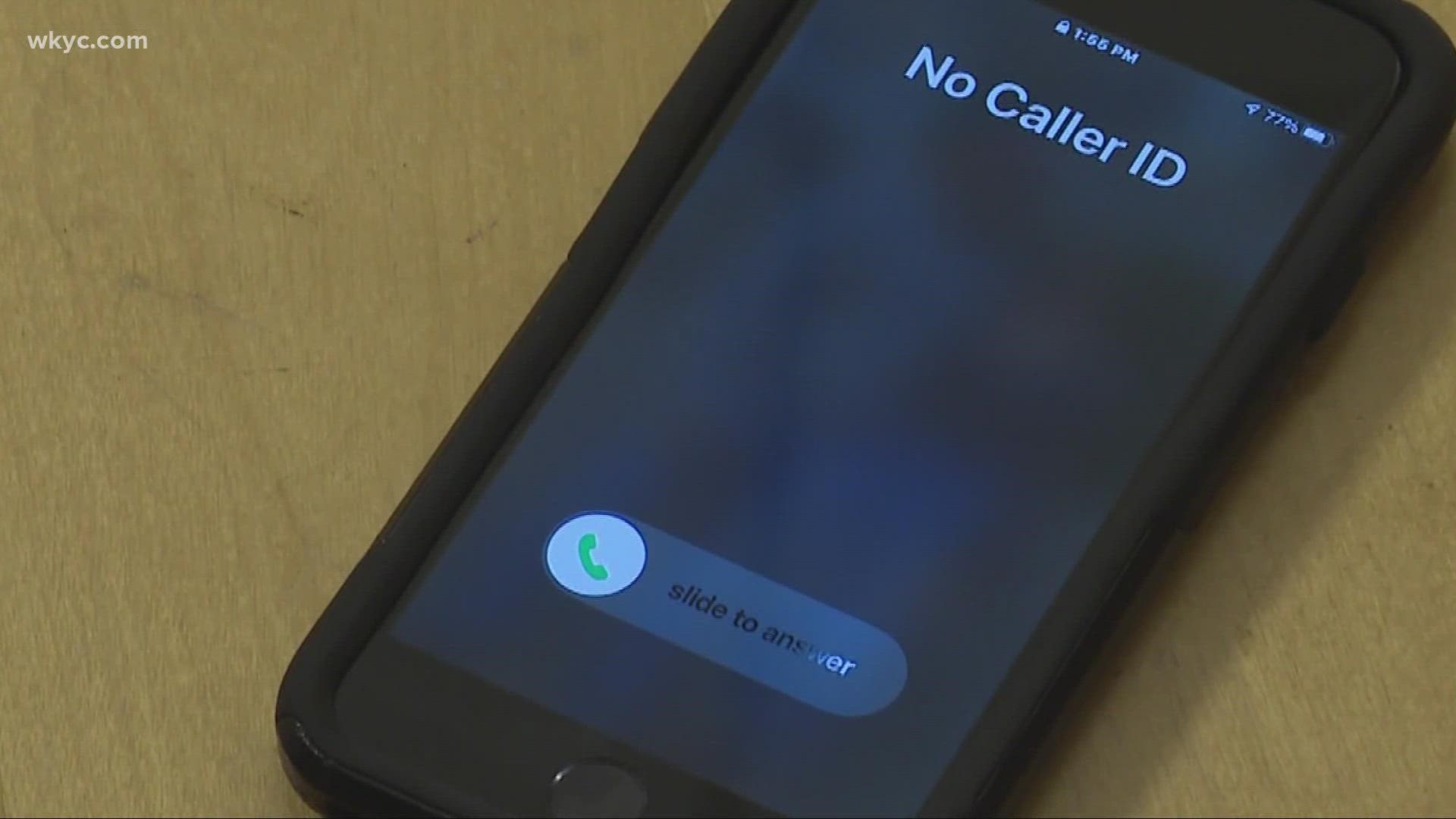CLEVELAND — It can happen to anyone – picking up a phone call or opening a text message only to find it’s a scammer trying to target your personal information or money. A new law, however, is aiming to make these scams more difficult to pull off.
According to the Ohio Attorney General’s Office, a new state law takes effect March 2 that's aimed at cracking down on “spoofing.” As described by the AG’s office, “spoofing” is when people use “numbers that might look familiar to your area” in the hopes you’ll pick up their call.
This law, Ohio Senate Bill 54, will give Attorney General Dave Yost more tools to fight robocalls, “including increasing penalties for telecommunications fraud and criminalizes the use of internet text messages and calls.”
Robocalls and texts are problems felt by many Ohioans, with the AG’s office reporting more than 23,000 reports of unwanted calls to their Robocall Enforcement Unit last year.
Ericka Dilworth, Director of Operations for the Cleveland Better Business Bureau (BBB), said the BBB hears about these kinds of scams and calls almost every day.
“Whether it’s a romance scam, whether it’s someone pretending to be the IRS, whether it’s a home improvement-related scam, there’s just so many different scams out there and so many times people fall victim,” she said.
Dilworth said the scammers also adapt to what’s going on in the world. For example, with tax season upon us, people may get more scam calls involving the IRS or taxes.
“We try to tell people often to just not answer the phone,” she said. “If it’s a legitimate caller they’re going to leave a message and you’re going to be able to return the call. But it’s very difficult for people not to answer the phone.”
The same goes for spam text messages. Dilworth said you really have to be careful with those messages because scammers can make the number appear legitimate or from a company like your bank or credit card.
“We really would advise that you not click on links unless you’re expecting a text from someone specifically,” she said. “If you think that your bank is trying to text you, we would recommend that you not text back, that you look up the number for your bank and call them.”
If you feel like you’ve been getting more robocalls and texts recently, it could trace back to a Supreme Court decision that occurred last Spring relating to the Telephone Consumer Protection Act (TCPA), which was enacted in the 1990s.
“The TCPA was enacted decades ago,” said attorney Marc Dann. “At that time, it prevented people from calling people on their cell phone or texting them or sending them faxes without their permission if they were using an automated dialer.”
“The subject of what an automated dialer was had become the subject of litigation that has heated up over the years as more of these cases were brought on behalf of folks who’ve gotten dozens, if not hundreds, of calls from bad actors,” Dann said. “And the Supreme Court ultimately weighed in and said ‘no, you have to follow the very strict definition of what a robocall is from the original TCPA statute.’ And unfortunately, Congress hasn’t done anything to update it since that.”
Ultimately, Dann said in the Supreme Court making the decision to follow the “strict definition of robocaller” from the original statute, the number of situations where there are truly automated calls happening without permission have been limited. Now, scammers have found ways to work around that strict definition of an autodialer.
“This is really a situation where the law isn’t keeping up with technology,” he said.
The best thing to do when you receive these calls is not to pick up or interact with the call by pressing any buttons. Doing so confirms to the scammer that you are active on the other end. Additionally, you can put your number on the National Do Not Call Registry, though Dilworth acknowledged that scammers may ignore this.
Dilworth also suggested trying to call your cell phone or landline company to see if they have some sort of third party app or service you can use to reduce or identify these calls.
MORE RELATED HEADLINES:

